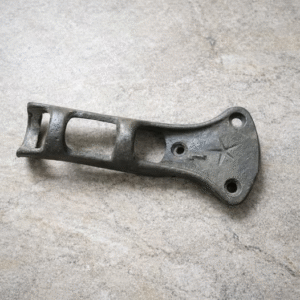Should Hot Food Be Cooled Before Refrigerating?
Cooling hot food before placing it in the fridge is essential for food safety and quality. Proper refrigeration helps prevent foodborne illnesses and extends the shelf life of perishable foods. However, misconceptions about cooling practices can affect food safety. Let’s clear up the guidelines for cooling hot food before refrigeration.
Why Cooling Matters
Prevents Bacterial Growth
Bacteria like Salmonella and E. coli thrive between 40°F (4°C) and 140°F (60°C), known as the “danger zone.” Rapid cooling prevents bacteria from multiplying and reduces the risk of foodborne illness.
Preserves Food Quality
Cooling food quickly helps maintain its texture, flavor, and nutritional value. Slow cooling can degrade quality, especially for meats and vegetables.
Protects Other Foods
Placing hot food directly into the fridge raises its internal temperature, which can compromise the safety of other stored foods.
Best Practices for Cooling Hot Food
To cool food safely and efficiently, follow these steps:
1. Allow Steam to Escape
Cover food loosely to let steam escape. This prevents condensation and speeds up cooling.
2. Use Shallow Containers
Transfer hot food to shallow containers for better heat dissipation. Avoid deep containers that trap heat.
3. Monitor Temperature
Use a food thermometer to check that the food cools from above 140°F (60°C) to below 40°F (4°C) within two hours.
4. Divide Large Batches
Split large quantities of food into smaller portions to speed up cooling.
5. Use an Ice Bath
For faster cooling, place food containers in an ice bath, ensuring the ice surrounds the container but doesn’t touch the food.
6. Stir the Food
Stir periodically to distribute heat evenly and cool food faster.
7. Avoid Crowding the Fridge
Give containers space in the fridge to allow for proper air circulation.
When Can You Refrigerate Hot Food?
Cool First, Then Refrigerate
It’s safe to refrigerate hot food once it’s cooled to below 140°F (60°C). Cooling partially before placing food in the fridge helps reduce strain on the appliance.
Don’t Leave It Out Too Long
Start cooling immediately after cooking. Leaving food at room temperature for too long increases the risk of bacterial growth.
Prevent Thermal Shock
Let hot food cool on the countertop for a few minutes before refrigerating it. Placing very hot food directly into the fridge can cause thermal shock, damaging the appliance.
Conclusion
In short, hot food should be cooled before refrigeration, but it’s safe to refrigerate once it’s below 140°F (60°C). Following proper cooling guidelines helps prevent bacterial growth, preserves food quality, and ensures safety. Prioritize food safety in your kitchen by cooling hot food correctly and minimizing the risk of foodborne illnesses.
Related Posts

If he was alive, he would have been 91 years old: How would Elvis look today? Ai picture shows
If alive, Elvis Presley would have been 91-years-old. And to mark the occasion, AI has predicted how The King of Rock and Roll might have looked Artificial…

Backlash erupts as Trump performs an impression of trans athletes that viewers say is hard to believe
Trump Admits Melania “Hates” His Dancing Donald Trump made an unexpected confession this week.He admitted that First Lady Melania Trump “hates” his dancing. However, that wasn’t the…

This scene is unedited. Here is a throwback 90s clip of Kelly Kapowski from ‘Saved by the Bell’
Tiffani Thiessen brought life to Kelly Kapowski, the all-American girl next door and Bayside High’s ultimate sweetheart. Kelly was a cheerleader, a good student, and a kind-hearted…
We’re Letting You Go,” My Boss Texted While I Was In Germany On A Company Trip.
They Fired Me via Text in Germany; Cancelled My Company Card | Office Revenge We’re cutting you loose. Your company card is canceled. Figure out how to…

Why Barn Stars Are More Than Just Decoration
The Story Behind Barn Stars: More Than Just Decoration Have you ever driven past an old barn or farmhouse and noticed a big, five-pointed star hanging above…

This vintage item is found in many homes and is quite recognizable. Can you figure out what it is?
What This Item Is This object is an antique/vintage cast iron flag holder (wall-mounted flag bracket). It’s designed to be screwed onto a wall, post, porch column, or fence so…